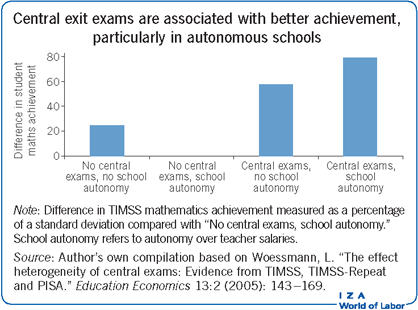Elevator pitch
Reaching the policy goal of improving student achievement by adding resources to the school system has often proven elusive. By contrast, ample evidence indicates that central exit exams constitute an important feature of a school system’s institutional framework, which can hold students, teachers, schools, and administrators accountable for student outcomes. While critics point to issues such as teaching test-only skills, which may leave students ill-prepared for the real world, the evidence does not bear this out. Overall, central exams are related to better student achievement, favorable labor market outcomes, and higher economic growth.

Key findings
Pros
Central exams are associated with substantially higher student achievement across national and regional school systems.
Central exams are a prerequisite for decentralized systems with autonomous schools to achieve high student achievement.
Central exams are related to higher earnings, lower unemployment, and higher information value of grades in the labor market.
Improved skills stimulated by central exams are related to higher long-term economic growth of countries.
Cons
Central exams raise tested curriculum-based skills, but not necessarily other skill dimensions.
Emphasis on higher academic performance in a subject may come at the expense of enjoyment of it.
Mere minimum competency exams or course graduation requirements are not enough to deliver the effects of curriculum-based central exit exam systems.
Many details of how to best implement central exams and which elements are crucial remain poorly understood.